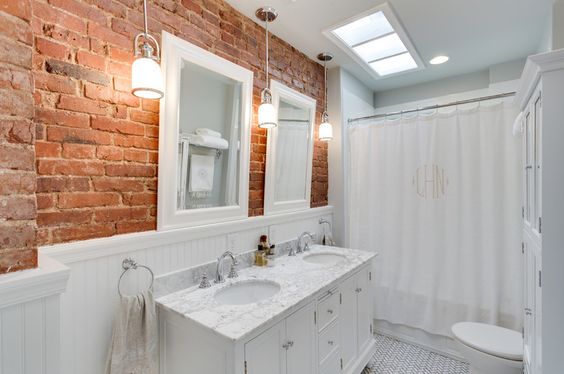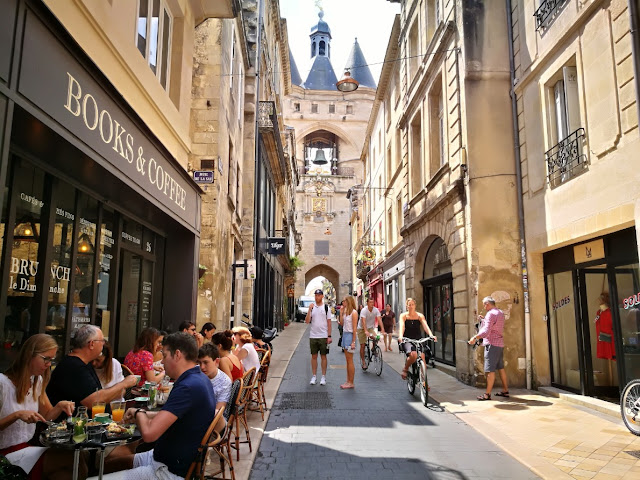LAUNDRY ROOM and BREAD RISER
My laundry room is very small for the size house I have - but how much room do you need for 2 people?
Here's the photo I used for my inspiration. Funny how things don't really turn out like the photo - but my room is smaller and I needed to simplify. It did help with my direction and selection. You can see more on my blog page.
MY DOUGH RISER ADDITION
I needed something to put items on as I took them out of the dryer. The counter by the window was too small and on the wrong side of the door. LIGHTBULB - my dough riser wasn't selling at the store - so I brought it home and painted it up.
In the beginning of the year when I still had my shop - I tried to sell this dough riser - and couldn't get what I wanted for it. Back in the days when we lived outside Buffalo we had no furniture and I would shop a local garage sale that had amazing items - for cheap. This had to be about 29 years ago.
Of course, I can't find a photo of the item that has been with us for so long - but it looked something like this below.
What's nice about it - is it has storage inside for items you don't use often - and it's narrow. This one sold at an auction for $350.
Using a dough box or kneading trough
You need to get into a different mindset to understand a dough box. (Also called dough bin, dough trough, kneading trough or tray, with or without a lid and/or legs.)
Baking used to be an important weekly task in many households. Bread was a staple food in Europe and North America. People depended on having plenty of it: not just medieval peasants with scant resources, but 19th century middle-class families too. These might be big families, active, with farmhands or servants to feed as well.
went for $775 - 19C primitive antique
A family of ten needed “three pecks” of flour for a week’s bread, according to Eliza Acton‘s advice around 1850. Three pecks is roughly 27 litres or 7 US gallons, so we’re thinking big sacks of flour for many households. The flour was tipped into a dough box or trough to start bread-making. It held the flour more tidily than a bowl. If the trough was on legs it didn’t need to sit on a table, and could be moved to a part of the room where the temperature was right.
$1295 One Kings Lane 18C
Warmth
Danish woman c1929 kneading dough in a wooden trough.
The flour had to be warmed in winter if it had come in from a cold barn or cellar, and a dough box was a good place for that. Once the yeast was added the mixture had to stay quite warm for the dough to rise into a nice “sponge”, which would make light bread. You could knead the dough thoroughly in a box-shaped trough without spilling much flour.
The box’s position (near the fire?) was important. The lid was good for keeping in the warmth, and it protected the dough from mice, ash, or other horrors: especially useful if the dough was left to rise a long time. Overnight was not unusual. Slow rising generally improved flavor and texture, and did not require temperatures near to blood heat.
$250 sold
The lid offered a surface for shaping the risen dough into loaves and then leaving them to rise again after being handled. Some lids had tray sides to make carrying the bread to the oven simpler. A kneading trough with no lid was covered with a cloth. A lidded box could be used for storing bread.
$900 painted on ETSY sold
So I painted mine. Nothing is worth anything unless you can sell it! I may as well keep it and use it.
I put a little plaster of paris in the paint to make it thick. Some of this was by accident because I was trying to make my own chalk paint - but it is nice when you try to antique it. The dark wax has something to hold on to.
For $20 I found this at a local auction. Just a simple and fast paint job to match the bread riser below it.
The green glass jars where from my local Goodwill.
On eBay I found this green scale for $22.50 - it's the shipping of $11 I didn't like. But still cheaper than finding it in a store somewhere - and I liked that it was green.
I used an antique white on the bottom and matched my cabinet color on the top - and then used a polyurethane finish for protection - on the top only.
I used bead board to give it the country look - and topped it off with a composite counter. The inspiration photo had bead board on the wall - instead I used it on the cabinets.
OTHER ITEMS IN THE ROOM
$7.50 - painted it a soft gray with some antique glaze and added the seashell.
Someone didn't want this and I've held on to it for 20 years - I am in Florida! I simply couldn't believe it actually fit this spot perfectly because I had nowhere else to put it.
Love my gray porcelain floor from Italy.
I used this hardware through out the house to keep it feeling old.
My counters - that started all the color selections.






























Comments
Post a Comment